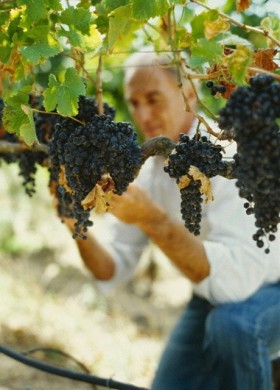The Southern Rhone: Undiscovered Wine Treasures and Values

Think you know Rhône wines? What if we told you the Southern Rhône hides some of France’s best-kept wine secrets—at prices that will surprise you? Explore the hidden treasures waiting to be discovered!
The Southern Rhône region begins some 45 miles south of the Northern Rhône, and its soils are less severe, producing more expansive wines. Here the stars are:
- Chàteauneuf-du-Pape (CDP),
- Côtes du Rhône. Don’t skip the inexpensive Côtes du Rhône offerings of your retailer. Particularly for the 2005, 2007, and 2009-2010 vintages, they must be counted among the best wine bargains that France offers. Try the selections from Perrin, the Château du Trignon, or Chapoutier Belleruche. In a step up the quality level, 18 Côtes du Rhône wines are also authorized to include the name of the village where they are produced on their label – your favorite, whether Sablét or Roaix, maybe your wine discovery!
- Gigondas
We all have enjoyed CDP in the winter, and as with the Côtes-du-Rhône offerings, a succession of fine vintages has occurred. But as it happened, a wine tasting at the French Embassy in Washington a few years ago took place on the very day that Pope Benedict XVI visited Washington. Since several CDP wines were being tasted, that struck me as an interesting coincidence. That area of the Southern Rhône was, after all, named for the period when the papacy was in Avignon, France, and CDP itself is located a few miles from Avignon (where the famous bridge still exists).
My wine discovery was “Les Sinards Blanc,” a white CDP produced by the renowned Perrin Brothers, owners of Château Beaucastel, which is regarded as one of the finest red CDP wines. We have visited the property and were intrigued by their white wines as well. The Beaucastel Blanc ages very well, they said, and for a considerable length of time. Our sample was smooth and very satisfying. The white wine is made from a 1,000-acre vineyard of vines that are 75 years old.
However, the “Les Sinards Blanc” comes from a 2.5-acre plot called the Clos du Château located within the enclosure of the historical Papal Palace itself. It is made from 70% Grenache Blanc and 30% Clairette. This limited-production wine (some 250 cases) was first produced for the 2005 vintage. Our case became our favorite wine for hearty fish dishes, such as lobster, bouillabaisse, or rockfish.
Beaucastel does make a second wine, called Coudoulet de Beaucastel Rouge, and it is flavorful, but unlike the practice in Bordeaux, it is not from the same terroir as Château Beaucastel, and is more properly considered a Côtes-du-Rhône than a CDP. At less than a third of the price of Beaucastel, though, Coudoulet is still a bargain. There is also a Coudoulet Blanc, which I enjoyed at the same tasting, but I found it lighter than the Les Sinards Blanc.
In this land of sunshine, visit with an open mind and a curious palate. You’re sure to make your wine discoveries. Then you’ll know how uncorking a fine bottle of wine can bring back pleasant memories – and create some new ones!

